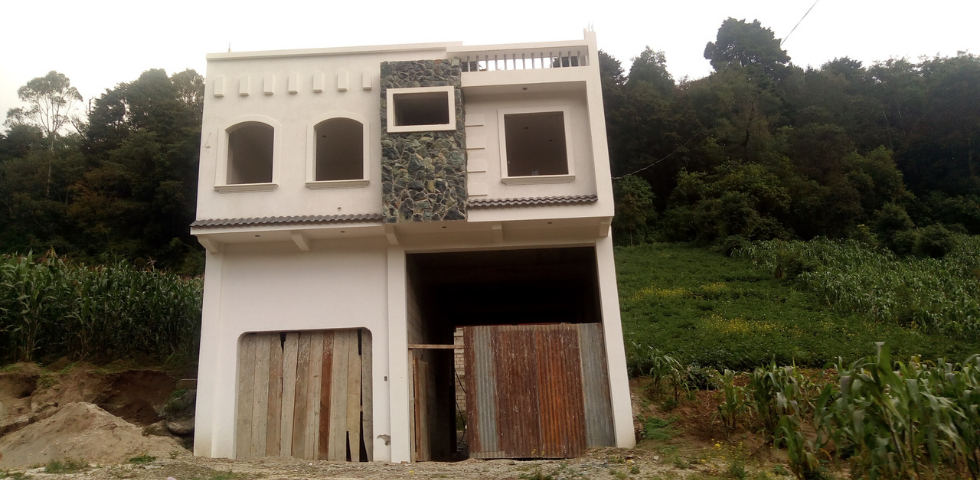From the macroeconomic point of view, remittances are fundamental for the monetary and exchange stability of Guatemala. This has been reflected in the annual statistics of the Banco de Guatemala for the last five years. Its effects are visible in the production variable of goods and services that are subsequently consumed. In addition, as a nominal flow, it generates cash circulation through the national banking system. This flow serves to leverage the growing deficit in the trade balance, that is, the gap between imports and exports. By 2020 the deficit reached 6,637,700,000 Euros. Remittances covered 11.35% of its Gross Domestic Product[1], which by the close of fiscal year 2020, the Bank of Guatemala reported as 11,508,000 Euros[2], a new historical record by surpassing the currencies of 2019 by almost 8 percent.
This monetary resource sent to Guatemalan families, expressed in transfers, checks, cash, or goods, is channeled in two ways: 1) formal remittances or 2) informal remittances, the latter of which are not recorded in the national statistics, as they are sent mainly through friends and family members, or by Hawala[3], an alternative system to transfer remittances. But regardless of the environment, this flow of resources constitutes one of the main sources of financing for families, especially in rural areas. In many cases the family remittance contributes to a large extent to complement the family’s diet; in other cases, it is the only income to guarantee access to food. But in general, remittances are often the only means by which a rural family can that sustain itself, and represent a determining factor in their ability to take a qualitative leap out of poverty.
But there has been a gradual transition. Between the 1990s and 2000s, families perceived the remittance as a complement to the household economy. This changed, as the conditions of poverty, inequality and exclusion worsened in rural areas, coupled with the lack of decent employment. With the arrival of the SARS-COVID-19 pandemic, these precarious conditions worsened, many jobs were lost, and this forced international migration became the only option for many families in rural areas.
On the other hand, it remittances have a has a strong impact on the cultural patterns of the family that receives them, and on the investment of assets such as land, residential and small-scale infrastructure for businesses and savings. There is a perception that, through remittances, the departments of San Marcos and Huehuetenango in Guatemala have become “producers of migrants,” and you can see this reflected in the quality of the housing structures. They are considerably better than those of the families that reside in the municipality that do not have a relative abroad. Added to the above are all the businesses and corporations that are set up around remittances and the social investment made by migrants in their community of origin.

Factors…
The worsening of poverty, the precariousness of employment and underemployment, internal forced displacement, multiple types of violence, agriculture no longer serving as a sustainable livelihood, these factors are the main triggers for families to seek other life prospects outside the country. This situation leads them to connect with the support networks of migrants, organizations or associations in the United States or relatives, who support them directly or indirectly to undertake their migration project. Now we observe that entire complete families are migrating; it is no longer the case that only the head of household emigrates. They have been joined by unaccompanied children (2014), young people, couples and families, often traveling in “caravans.” As long as the adaptation processes take place in the United States and family reunification is achieved, with its different variants (return or deportation), families will continue to emigrate, seeking to preserve their lives.
Regarding the productive use of remittances, international experiences show that remittances have become the main source of foreign exchange and have undoubtedly helped to stimulate the economy. Migrants and their families tend to use them rationally, according to the socioeconomic context in which they move, although this use is not always the most desirable from the microeconomic point of view.
Although there is a consensus in the majority that remittances are used primarily to satisfy the basic needs of the households that receive them, there are large differences of opinion among international authors on the productive use of the remittance. It should be noted that by productive use is generally considered as saving and investment. In any case, an implicit or explicit pattern of rationality always underlies. The current use of remittances in is the best that can be given in the current context of local economies, observing impoverished communities, visibly malnourished children and the social services that the State must provide are scarce or non-existent.
In general, there is a need to broaden the analysis of the productive use of family remittances, which integrates the perspective of the senders, that is, migrants who have demonstrated in various ways and expressions their interest in contributing to the country and mainly to their communities of origin. In the future, a bridge can be built through which other initiatives of migrants also travel the accompaniment of key actors such as the Church in its different expressions, local authorities and community leaders, who can contribute to reflecting on the importance of the productive use of the remittance.
Rosario Martínez A.
Partner
RFM – Guatemala Team
Pilgrim House of the Migrant “Santo Hermano Pedro de Bethancourt”
________________________________
[1] Datosmacro.com (2020) See at: https://datosmacro.expansion.com/comercio/balanza/guatemala#:~:text=La%20balanza%20comercial%20sube%20en,12%2C21%25%20del%20PIB. Consultation 08/14/2021
[2] Banco de Guatemala (2021) See at: http://www.banguat.gob.gt/es/page/remesas-familiares Consultation 08/14/2021
[3] Hawala (Arabic حوالة) (also known as Hundi) is one of the informal funds transfer systems (TIF) generally used in many regions locally and internationally. Hawala means “transfer” or “wire” in Arabic banking slang. https://transferwise.com/gb/blog/what-is-hawala

